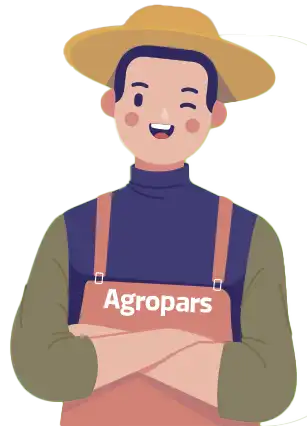Introduction to Disc Cultivation in Agriculture
A suitable cultivation bed is one that is free of lumps and has a uniform surface. To achieve such a bed, the use of tillage tools, especially agricultural discs, is one of the main options. By using discs, a suitable bed for cultivation can be provided in one or two stages of tillage operations, depending on the soil type.
Disc Harrowing in Agriculture
A disc harrow is a secondary tillage implement used to soften the soil and create a uniform surface after plowing with a plow or chisel. This operation helps prepare the land for cultivation and can improve plant growth. Disc harrows are typically produced in offset and tandem models, each suited for specific farming conditions.
- Offset discs are generally used for heavy tractors and large farms.
- Tandem discs are ideal for small farms and low-power tractors.
Benefits of Disc Harrowing
1. Proper Soil Aeration
Disc harrowing creates porosity in the soil, helping it aerate better, which is essential for root development.
2. Softening Clods from Plowing
Discs effectively break up clods formed by plowing and soften the soil, preparing it for planting.
3. Helps Control Weed Growth
By cutting roots and crushing weeds, disc harrowing helps control weed growth, making it easier for crops to thrive.
4. Preparing the Bed for Planting
Disc harrowing creates a smooth and even surface for planting, ensuring uniform seed placement and better germination.
5. Maintaining Soil Moisture
If used alone for primary tillage, disc harrowing helps to maintain soil moisture, similar to the function of combines, by reducing evaporation.
Disadvantages of Discing
1. Clumping
Frequent use of the disc in light soils can lead to clumping or compaction in the underlying layers, reducing soil porosity.
2. Soil Erosion
In sandy and light soils, excessive use of the disc can cause soil erosion, and wind and rain can exacerbate this issue.
3. Reduction of Soil Organic Matter
Overuse of discs can reduce soil organic matter, leading to poorer soil health and lower fertility.
4. Environmental Damage
Excessive discing may cause damage to the ecosystem and soil microorganisms, affecting soil biodiversity.
5. High Operating Costs
Discing operations require more investment and generally have higher costs compared to other tillage methods.
Important Points Before Discing
1. Plowing Depth
The plowing depth should not be so shallow that it does not create a suitable cultivation bed, nor so deep that lower nutrient-poor layers are brought to the surface.
2. Sloping Lands
In sloping lands, plowing and discing should be done according to the slope of the land to prevent soil and water erosion.
3. Variety of Machinery Use
To prevent damage to soil texture and soil microorganisms, using a variety of machinery is essential for maintaining soil health.
Conclusion
Considering the advantages and disadvantages of discing, this method remains one of the most practical tillage operations. However, special attention should be given to the limitations it imposes, particularly in light soils, where it can lead to soil erosion. It is crucial to maintain a balance in the use of these tools and ensure proper frequency of agricultural machinery use to preserve soil texture and prevent erosion.
Author: Engineer Esmaeil Sadeghi Zadeh
Agricultural Machinery Expert






